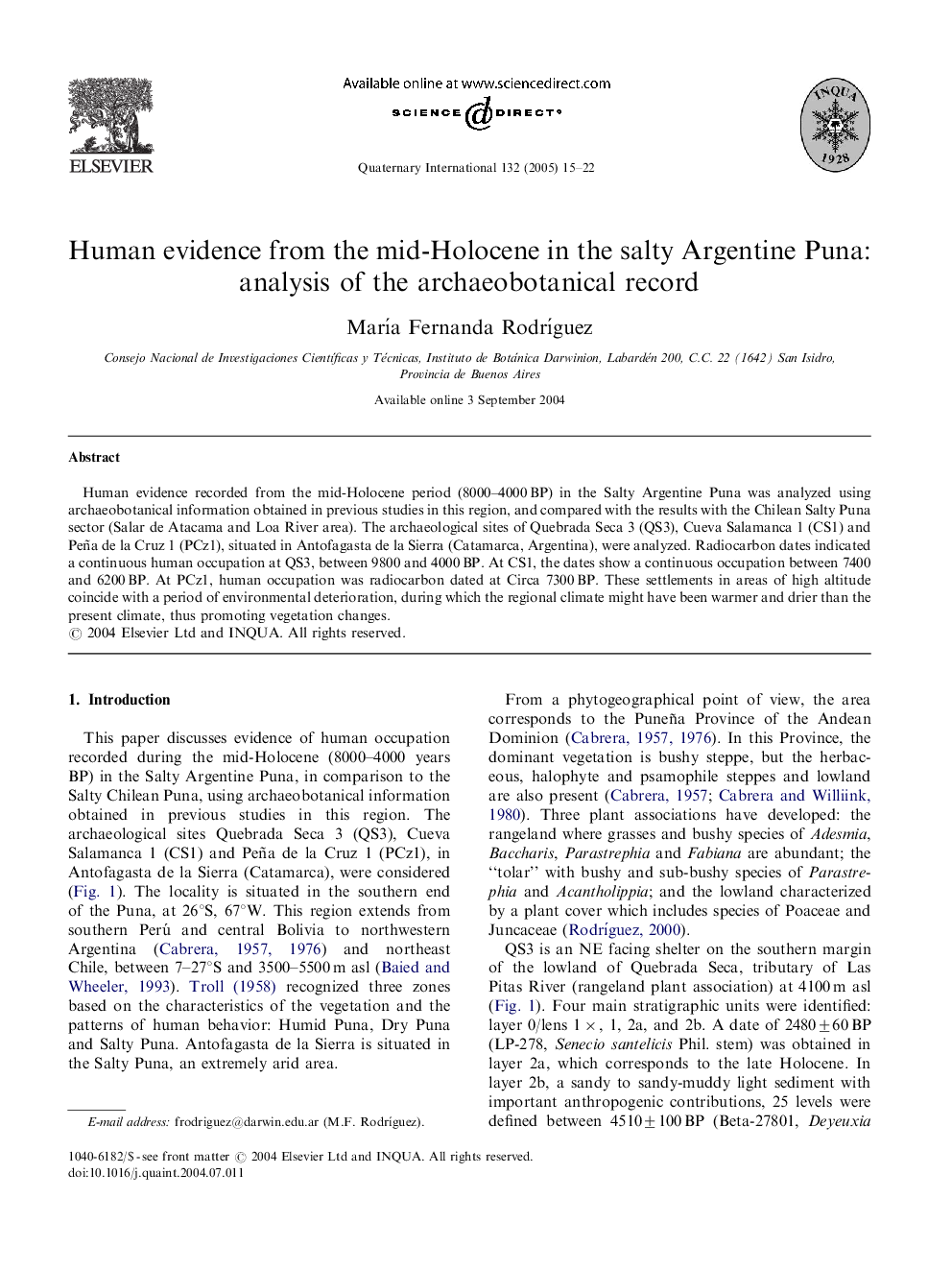| Article ID | Journal | Published Year | Pages | File Type |
|---|---|---|---|---|
| 10500957 | Quaternary International | 2005 | 8 Pages |
Abstract
Human evidence recorded from the mid-Holocene period (8000-4000Â BP) in the Salty Argentine Puna was analyzed using archaeobotanical information obtained in previous studies in this region, and compared with the results with the Chilean Salty Puna sector (Salar de Atacama and Loa River area). The archaeological sites of Quebrada Seca 3 (QS3), Cueva Salamanca 1 (CS1) and Peña de la Cruz 1 (PCz1), situated in Antofagasta de la Sierra (Catamarca, Argentina), were analyzed. Radiocarbon dates indicated a continuous human occupation at QS3, between 9800 and 4000Â BP. At CS1, the dates show a continuous occupation between 7400 and 6200Â BP. At PCz1, human occupation was radiocarbon dated at Circa 7300Â BP. These settlements in areas of high altitude coincide with a period of environmental deterioration, during which the regional climate might have been warmer and drier than the present climate, thus promoting vegetation changes.
Related Topics
Physical Sciences and Engineering
Earth and Planetary Sciences
Geology
Authors
MarÃa Fernanda RodrÃguez,
